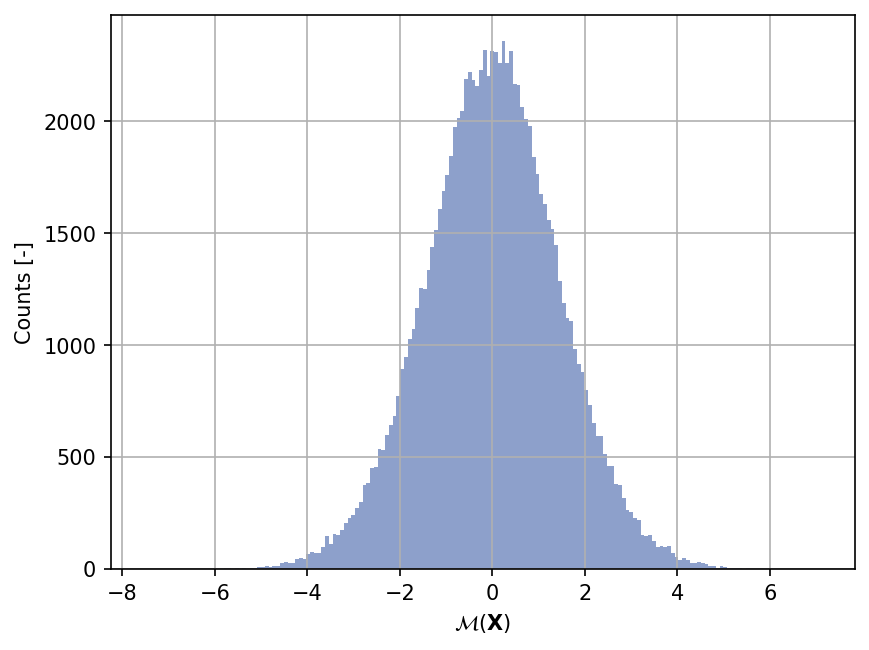Twenty-dimensional Function from Alemazkoor and Meidani (2018)
Contents
Twenty-dimensional Function from Alemazkoor and Meidani (2018)#
import numpy as np
import matplotlib.pyplot as plt
import uqtestfuns as uqtf
The 20-dimensional test function from [AM18]
(or Alemazkoor20D for short) is a polynomial function that features
low-degree of interactions (i.e., \(2\)) between the input variables
(i.e., high in dimension but of low-degree).
It was used as a test function for
a metamodeling exercise (i.e., sparse polynomial chaos expansion).
Test function instance#
To create a default instance of the Alemazkoor20D function1:
my_testfun = uqtf.Alemazkoor20D()
Check if it has been correctly instantiated:
print(my_testfun)
Name : Alemazkoor20D
Spatial dimension : 20
Description : High-dimensional low-degree polynomial from Alemazkoor & Meidani (2018)
Description#
The Alemazkoor20D function is defined as follows:
where \(\boldsymbol{x} = \{ x_1, \ldots, x_{20} \}\) is the twenty-dimensional vector of input variables further defined below.
Probabilistic input#
Based on [AM18], the probabilistic input model for the function consists of twenty independent random variables as shown in the table below.
No. |
Name |
Distribution |
Parameters |
Description |
|---|---|---|---|---|
1 |
\(x_1\) |
uniform |
[-1.0, 1.0] |
N/A |
\(\vdots\) |
\(\vdots\) |
\(\vdots\) |
\(\vdots\) |
\(\vdots\) |
20 |
\(x_{20}\) |
uniform |
[-1.0, 1.0] |
N/A |
Reference results#
This section provides several reference results of typical UQ analyses involving the test function.
Sample histogram#
Shown below is the histogram of the output based on \(100'000\) random points:
xx_test = my_testfun.prob_input.get_sample(100000)
yy_test = my_testfun(xx_test)
plt.hist(yy_test, bins="auto", color="#8da0cb");
plt.grid();
plt.ylabel("Counts [-]");
plt.xlabel("$\mathcal{M}(\mathbf{X})$");
plt.gcf().set_dpi(150);

References#
- AM18(1,2,3)
Negin Alemazkoor and Hadi Meidani. A near-optimal sampling strategy for sparse recovery of polynomial chaos expansions. Journal of Computational Physics, 371:137–151, 2018. doi:10.1016/j.jcp.2018.05.025.

